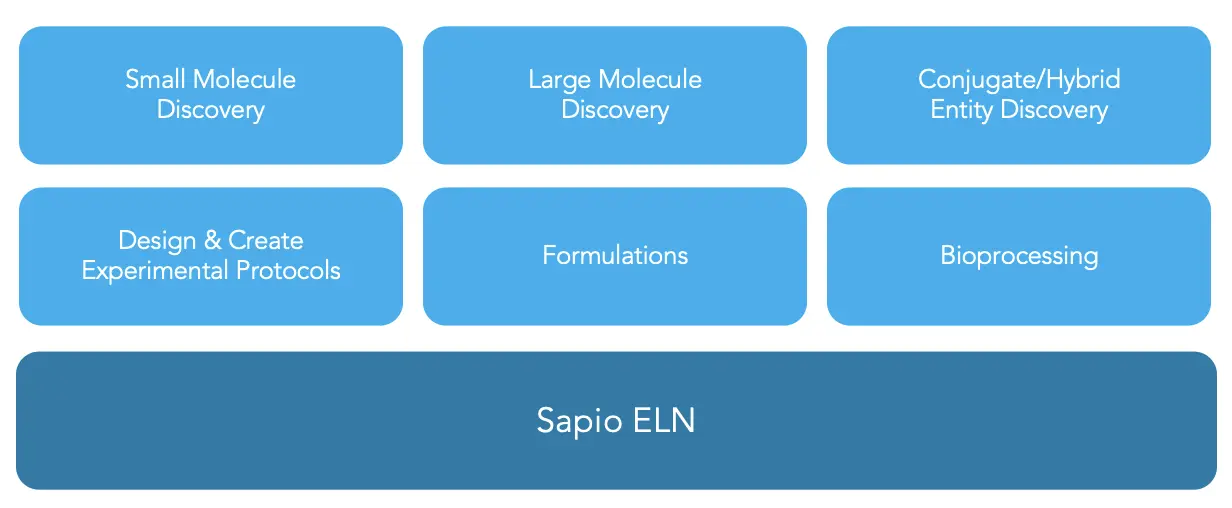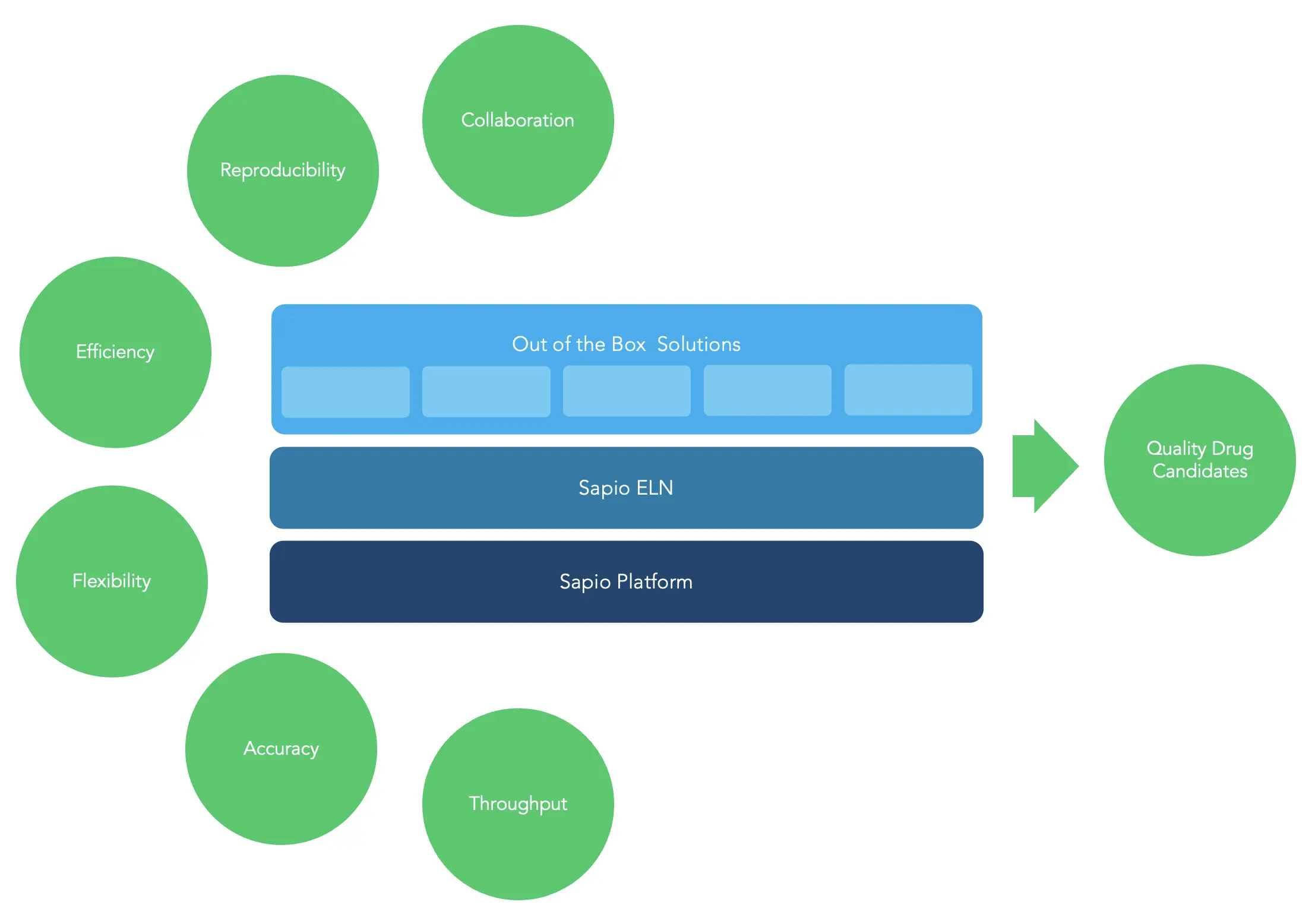Article revised on July 31, 2024.
Want to find out more about the advantages and benefits of an Electronic Lab Notebook? Read about them here.
What is an ELN? An electronic lab notebook, or ELN, is software scientists and lab technicians use to design, execute, and document their research, experiments, and assays. As organizations that produce large amounts of information that need to be analyzed, studied, and shared, laboratories must be able to store and access data efficiently.
Historically, labs have used manual methods such as spreadsheets and handwritten notes to document their findings, but these processes aren’t able to keep up with the demands of the modern laboratory. Electronic lab notebooks offer simple, secure creation and management of research data to increase consistency and productivity across all stages of the research process.
In this guide, we’ll explain what ELN software is, covering the following topics:
- What is an electronic lab notebook?
- Typical ELN functionality
- Key benefits of an ELN
- Are there any limitations to using an electronic lab notebook?
- What to look for when choosing an ELN
- Discover Sapio ELN
What is an electronic lab notebook?
An electronic lab notebook (ELN) is a digital solution used to improve the efficiency of record-keeping processes within laboratory settings. Whatever scale they operate at, research centers generate vast amounts of data related to their research and experiments, which paper notebooks can’t keep up with. Even digital data management tools lack the sophistication required to accurately record, analyze, and access the data created by a modern lab.

Figure 1. Sapio Electronic Lab Notebook Overview
ELN software has been specifically developed to meet the unique needs of scientists and technicians, offering a secure, efficient platform for managing research data. As well as offering science-backed functionality, an ELN enables seamless integration with other data transformation tools throughout the organization, allowing for easier collaboration and improved data accuracy.
Typical ELN functionality
ELNs serve various functions, from documenting key information about research and experiments to facilitating sharing with internal and external collaborators. As a single source of data, an ELN helps maintain the quality and consistency of laboratory data. Technicians can also create accounts and assign permission levels, ensuring that only authorized users can view or edit certain data.
Some of the common functions that ELN solutions can perform include:
- Support for biotechnology research and large-molecule
- Support for chemistry research and small-molecule
- Support for multimodal entities and registration
- Support for industry-specific use cases like:
- Reusable experiment templates
- Molecular biology toolkit
- Sample management and 3D plating
- Free-form and structured note-taking
- Built-in science tools, such as graphical plasmid editing, flow cytometry gating, and CRISPR design
- Built-in data visualization and reporting tools
- Inventory and materials management
- In vivo studies
- eSignature functionality
Key benefits of an ELN
Implementing an ELN solution offers research laboratories a wide range of benefits. It makes day-to-day processes easier and more efficient while improving accuracy and collaboration with wider organizations. Let’s examine the key benefits of electronic lab notebooks.

Figure 2. Electronic Lab Notebook Benefits
Increased throughput and drug candidate identification
Manual processes are inherently slower and more susceptible to human error than those managed through specialized laboratory software. Integrating an ELN solution can significantly improve the productivity of scientific organizations, helping them scale up seamlessly. By increasing efficiency and collaboration throughout the wider laboratory environment, ELN software helps increase experiments, assays, and data processing throughput and identify high-quality drug candidates for further investigation.
Efficient data processing
The digital nature of ELN solutions allows for rapid data capture, analysis and modeling, supporting laboratory research requirements by improving data accuracy and efficiency. With built-in data search, views, and charting, as well as specialist data analysis tools like flow gating, lab technicians can manage and process data much faster than traditional methods. In addition, directly inputting notes into the ELN rather than transcribing handwritten notes improves accuracy and productivity by allowing scientists to focus on other essential tasks.
Accuracy & traceability
Accuracy and consistency of data are essential for any scientifically backed process. Eliminating the need to manually transcribe notes from paper to a digital format helps to minimize human error and ensure that records are consistent across all departments. By moving note-taking processes into a secure, digital space, an ELN enables fast, efficient traceability, vital for communicating with regulators and stakeholders.
Improved quality & reproducibility
Ensuring experiment quality and reproducibility is essential for modern labs, and ELNs support this through process automation, secure data consolidation, and integrated laboratory management solutions. This helps maintain consistency throughout the project timeline and across multiple locations, enables compliance with regulatory requirements, and ensures accountability when reporting to key stakeholders.
Streamlined collaboration
Utilizing a single central point of access allows lab partners and collaborators to access samples, monitor data quality, and search records remotely. This gives them the confidence that all information is up to date, minimizing mistakes caused by using old document versions. Modern ELN solutions are designed to integrate seamlessly with a LIMS, or laboratory information management system, enabling remote collaboration with wider departments and external organizations.
Integration & adaptability
Experiments need to be adaptable to the rapidly changing needs of the research team, stakeholders, and the broader industry as a whole. By digitizing and automating workflows, technicians can quickly and easily change processes to meet new requirements with minimal downtime and disruption. Modern ELN software also enables integration with various other lab systems and equipment, helping to further improve efficiency and collaboration throughout the ongoing project.
Are there any limitations to using an electronic lab notebook?
While they are extremely useful pieces of software, electronic lab notebooks have specific functionality compared to other industry-specific tools such as a LIMS solution. ELNs primarily focus on taking and sharing research notes and molecular biology toolkits rather than on the automation of processes, so they can work best with other digital lab solutions, which means you may need to look for an informatics platform rather than just a standalone Electronic Lab Notebook.

Figure 3. Sapio Unified, Configurable Lab Informatics Platform
As with any additional piece of software, there is a risk of creating silos within the organization when implementing an ELN. A data-driven integration solution such as Sapio Jarvis can help to ensure seamless connectivity between systems, enabling efficient collaboration without barriers.
What to look for when choosing an ELN
Each lab is unique, with its own processes and requirements. Therefore, it’s important to choose an ELN that can meet those needs while also offering simple scalability and connectivity with other essential systems. Leveraging a central data repository allows users across the organization to work together on the same experiments with the certainty that all information is reliable and up to date for greater accuracy.
To minimize the learning curve and enable efficient implementation, choose ELN software with a no-code approach. Some solutions offer pre-built rules and easily configurable drag-and-drop workflows to make it even easier to configure bespoke processes for your lab.
Discover Sapio ELN
ELN software helps to ensure accurate record-keeping throughout all stages of the research process (for more information, check out our glossary of 92 common ELN terms here). From documenting key information about experiments to sharing your findings with your peers, this simple yet effective system increases efficiency while avoiding the disorder and data risks of handwritten processes.
Sapio ELN software is a powerful electronic lab notebook that enables accurate, efficient documentation and collaboration through intuitive workflows and streamlined integration. Packed with practical scientific tools and reusable data objects, Sapio ELN empowers scientists to do what they do best.
To find out more about Sapio ELN, or any of our solutions, get in touch or request a demo today.





